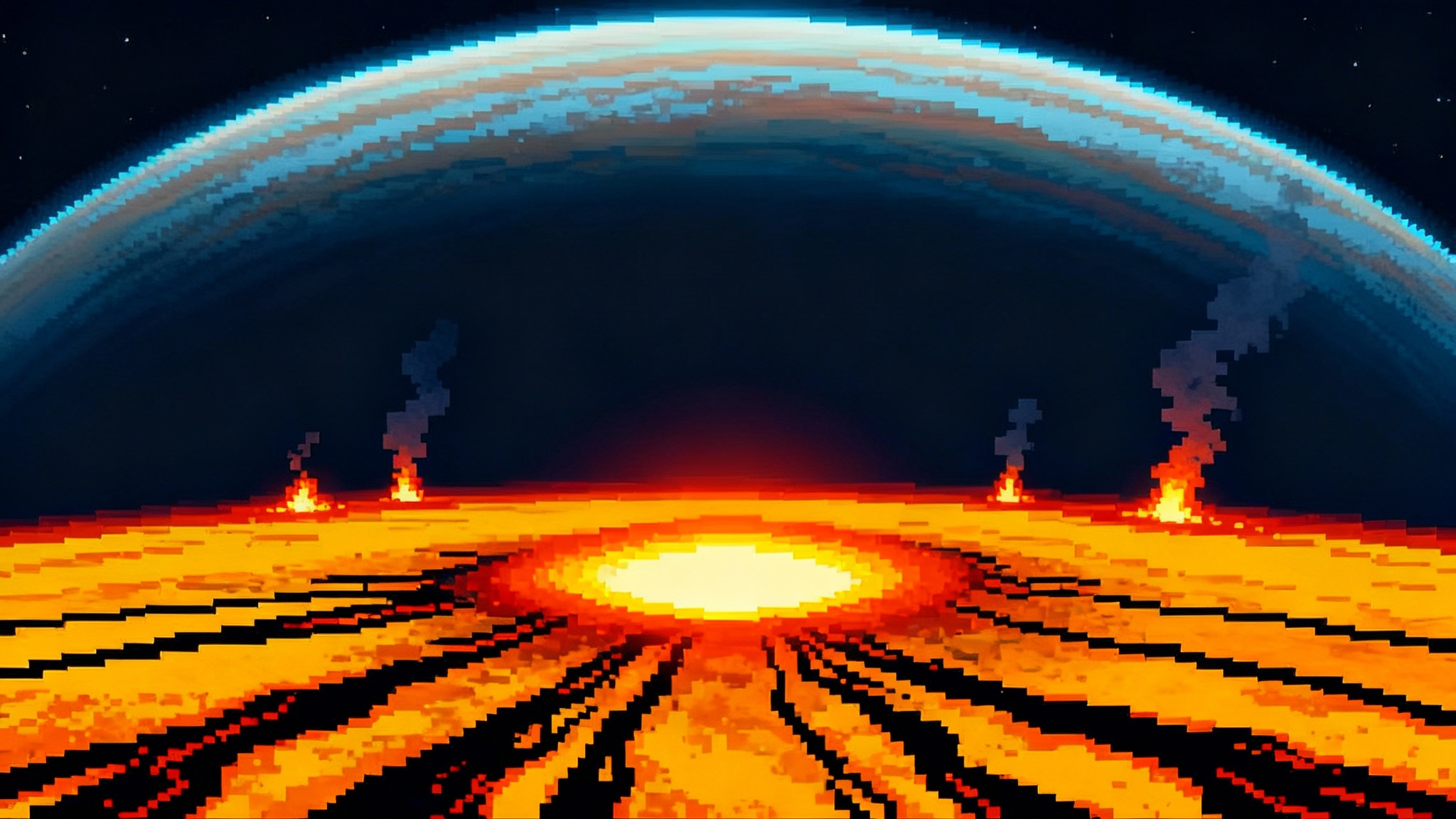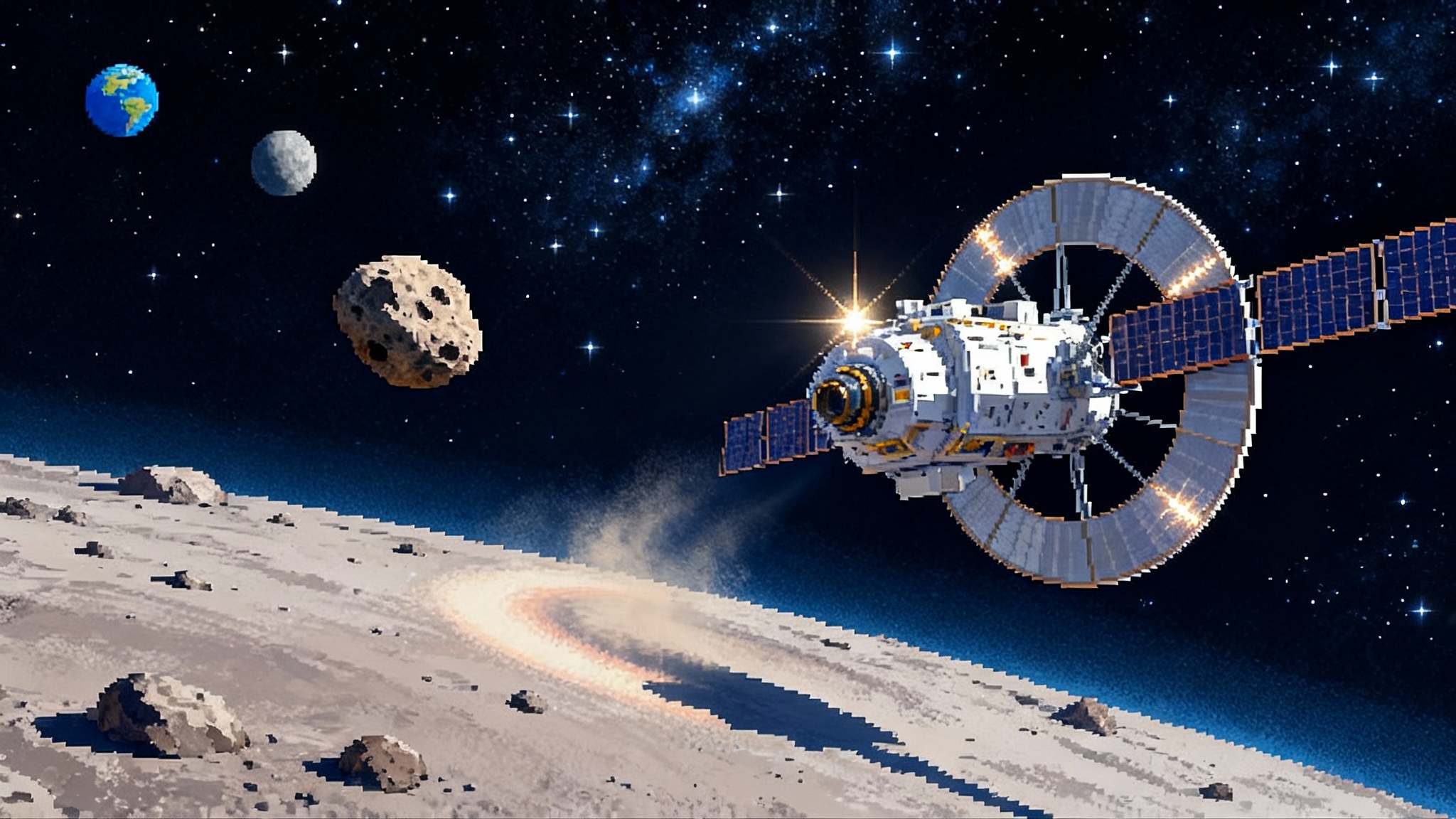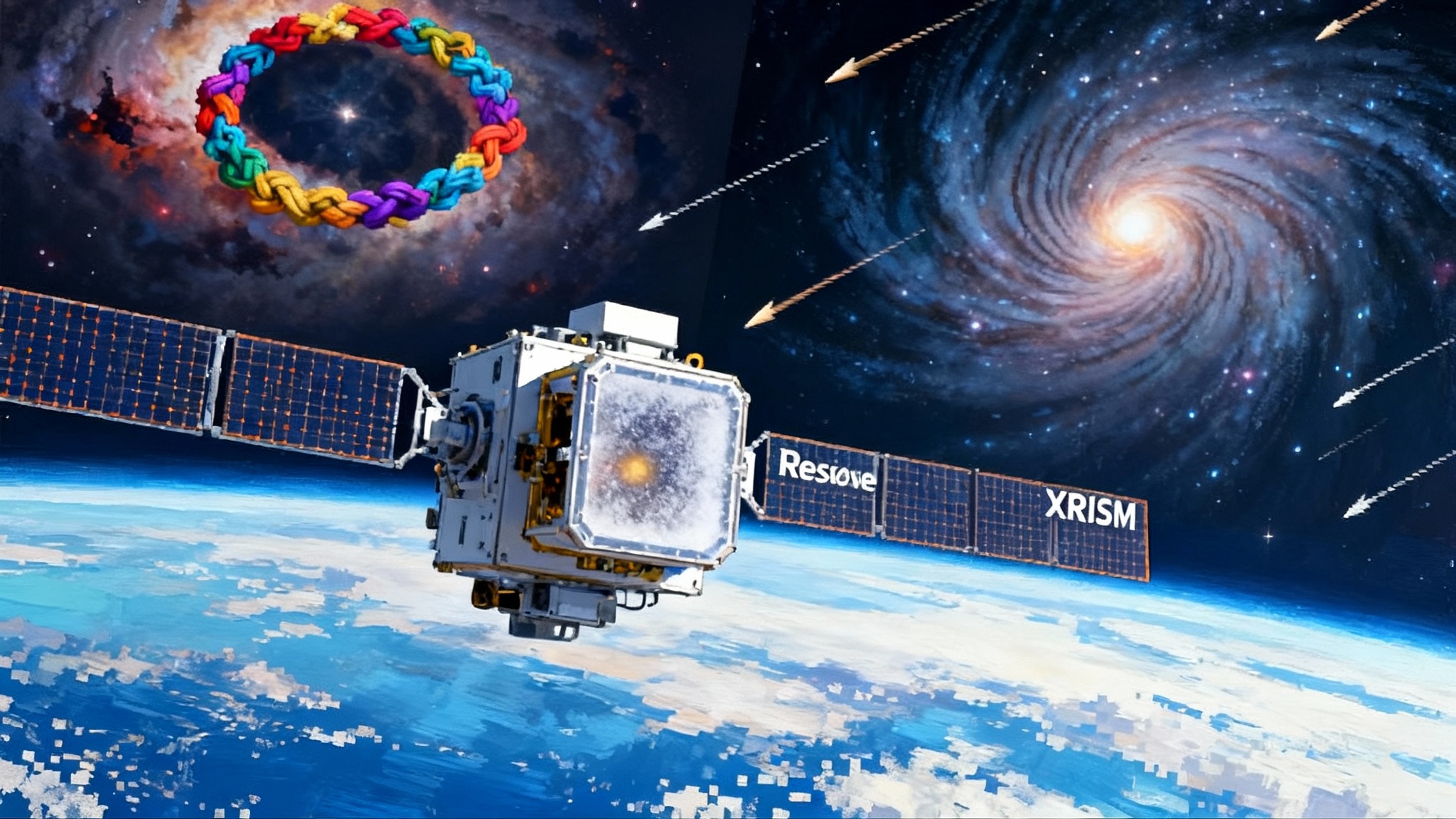Juno’s Record Io Eruption Reveals Planetwide Plumbing
A December 27, 2024 firestorm on Io outshone every volcanic hotspot ever seen, and the timing across multiple vents points to a connected magma network beneath the surface. Here is what Juno found, what Earth-based observatories can still confirm, and why it changes how we search for volcanic exoworlds.

Breaking: the most energetic hotspot ever seen on Io
On December 27, 2024, NASA’s Juno spacecraft aimed its infrared mapper at Io’s southern hemisphere and saw a thermal beacon so intense it saturated the instrument. The feature sprawled across an area larger than Lake Superior and released more than 80 trillion watts at peak. In January 2025, NASA and the Juno team called it the most powerful volcanic activity ever recorded on the moon. The finding came from Juno’s Jovian Infrared Auroral Mapper, built with support from the Italian Space Agency and Italy’s National Institute for Astrophysics. See the team’s JPL report on brightest Io eruption for mission context.
Crucially, the hotspot did not look like a single blowtorch. Juno’s images and spectra hinted at a cluster of vents igniting together. That detail matters because it turns a spectacular outburst into a test of how Io works under the surface.
A hint of synchronization across hundreds of kilometers
By spring 2025, the Juno infrared science team posted a deeper analysis with a striking claim. Thermal modeling and temperature-time curves pointed to multiple hotspots that brightened at the same time. The team estimated total power of 140 to 260 trillion watts and placed the activity near 73 degrees south, 140 degrees east. More than one named site spiked. The simplest explanation was a common trigger moving beneath the crust. Read the team’s technical analysis of synchronized eruptions for methods and numbers.
If you live above a city water grid, you already know the metaphor. Turn the pressure up at the central pump and faucets across a neighborhood surge together. On Io, the pump is tidal heating and the pipes are magma-filled cracks. The December 2024 outburst behaved like a pressure wave sweeping through a connected system, not a single isolated volcano exploding on its own.
Why Io has the energy to connect volcanoes
Io orbits inside Jupiter’s enormous gravitational field. Europa and Ganymede tug it into a three-moon rhythm that keeps Io’s path slightly elliptical. With every lap, Jupiter squeezes and stretches the little world. Rock flexes like a stress ball, and that constant kneading turns mechanical work into heat. The heat melts rock into magma. The magma collects in pockets that can link up, forming networks of ducts and mushy zones. When pressure changes in one part of the network, the effect can ripple across long distances.
Engineers would call this a coupled system. Planetary scientists look for signatures of coupling: simultaneous brightenings at separated hotspots, temperature histories that rise and cool together, and surface color changes that appear in multiple places after a single event. Juno’s record eruption checked several of those boxes.
What synchronized eruptions tell us about Io’s interior
If multiple vents light up together, the connection has to be real and fast. Solid rock transmits stress quickly. Magma moves slower, yet gases can jet along fractures. The timing seen by Juno suggests a linked set of reservoirs and sills feeding each other over hundreds of kilometers. That pushes Io away from a pepperoni pizza model where each volcano stands alone and toward a plumbing district model where many vents tap a shared pressure system.
This matters because how the interior is arranged controls what the surface does. A single isolated reservoir stores energy then dumps it locally. A network shares pressure and can redistribute energy, producing longer events and coordinated activity. The network idea also fits long-standing puzzles like why some enormous Io eruptions appear without warning while others ebb and flow with a rhythm.
The near-term science window
Juno’s extended mission was scheduled through September 2025. As the spacecraft winds down, teams at NASA’s Jet Propulsion Laboratory, the Southwest Research Institute in San Antonio, and partner institutes in Italy and elsewhere are mining the final passes and distant looks. The most useful checks through 2026 do not all require another close encounter. Three campaigns can deliver decisive tests from Earth or near-Earth assets:
-
Thermal follow-up at many wavelengths. The hotspot’s cooling curve over months encodes the thickness of the erupted material and the geometry of the feeding cracks. Infrared telescopes can track cooling rates at night, when reflected sunlight is minimized. If separate vents cool at the same rate, they likely shared the same initial conditions and source.
-
Gas and plasma monitoring around Jupiter. Big eruptions on Io feed sulfur and oxygen into Jupiter’s magnetosphere, forming a doughnut-shaped plasma torus. Ground-based spectrometers, and spacecraft that monitor Jupiter’s environment, can watch for a weeks-long surge in sulfur and oxygen emission lines. If separated hotspots lit together because one subsurface pulse drove them, the torus should reflect a single extended input rather than many unrelated bursts. High-resolution spectroscopy like XRISM's Resolve cosmic weather map shows how line diagnostics reveal changing plasmas.
-
Color and surface-texture change maps. Visible images from professional and advanced amateur telescopes can catch darkening from fresh lava and frosting from sulfur dioxide snow. Coordinated campaigns that compare regions north and south of the main hotspot can tell us whether deposits formed in a single plume or in several coeval plumes. For timing strategies in the Jupiter system, see our Europa Clipper mission preview.
Put together, these observations can confirm whether the December 2024 event was a one-off coincidence or a sign of a truly connected magma system.
A new playbook for modeling volcanic worlds
Volcanic worlds are not just about explosive vents. They are complex heat engines where tides, fractures, and melts interact. Juno’s Io result nudges modelers to include three specific ingredients:
- Shared reservoirs and sills. Treating each hotspot as independent can miss synchronized behavior. Networks create feedback. A pressure drop at one vent can pull on its neighbors and trigger a cascade.
- Tidal forcing at the right timescale. Io’s shape stretches fastest near closest approach to Jupiter. If vent activity clusters around those orbital phases, or if the biggest events lag the strongest squeeze by a predictable amount, models must allow for delayed failure and wave-like propagation.
- Chemistry that moves with the melt. Sulfur dioxide, sulfur monoxide, and alkali metals like sodium and potassium travel through different pathways and condense at different temperatures. Measuring their ratios before and after an event can separate shallow plumbing from deeper sources. For a broader look at spectral surveys that enable this kind of work, see our SPHEREx mission overview.
These are not abstract tweaks. They change what we should expect to see on other worlds, including distant exoplanets.
How to spot a super-Io from light-years away
Astronomers already use transit spectroscopy to study starlight filtering through a planet’s atmosphere. Volcanic worlds can add a twist: transient gas plumes. The strategy is straightforward.
- Look for time-variable sulfur dioxide. A planet that is otherwise stable but sometimes shows extra absorption in sulfur dioxide bands during transit is a candidate for volcanically sourced plumes. A plume that rises, spreads, and freezes into snow would create a short-lived signature.
- Watch the sodium and potassium lines. Giant plumes loft neutral sodium and potassium atoms that glow in very specific colors. If a planet shows deeper sodium absorption on some transits but not others, and the timing matches a tidal schedule, that is a strong volcanic clue.
- Track thermal phase bumps. A world that usually warms and cools predictably as it turns can show a sudden extra glow when a large lava flow is fresh. That bump should fade over weeks. Phase-curve monitoring with space telescopes can pick it up.
The synchronized-eruption concept adds a powerful filter. If a planet’s spectrum shows multiple gases peaking together, then fading together on the same timetable, a shared subsurface source is likely. In other words, we can use time as a fingerprint for a magma network.
The practical case for an Io-dedicated mission
Juno was built to study Jupiter and has been a brilliant opportunist at Io. The next step is a mission designed for the volcanic moon itself. Planetary scientists have repeatedly proposed an Io Volcano Observer concept under NASA’s Discovery program. The logic has now sharpened.
- Science value. A connected network implies predictable pressure waves. A dedicated mission could fly low when a wave is due and catch the system in the act. It could map vent temperatures across an eruption and measure gas chemistry along the plume’s height, then do it again weeks later.
- Instrument set. The essentials are clear: a hardened thermal imager to read temperatures from red-hot to warm rock, a narrowband spectrometer tuned to sulfur dioxide and sulfur monoxide lines, a mass spectrometer to sample sputtered gases at altitude, and a magnetometer to sense how eruption gases interact with the plasma environment. A small, fast camera would track plume heights and deposit footprints. None of these are speculative. Versions have flown before on missions like Galileo and Cassini.
- Operations plan. Short, repeated flybys lower radiation dose and raise science return. A campaign of dozens of 500 to 2,000 kilometer passes, spread over different Jupiter-longitudes and orbital phases, would catch several network pulses. The mission would use radiation-hardened avionics and frequent downlinks. With modern autonomy, the spacecraft could retarget its imagers in real time when a hotspot flares.
- Program fit. The price point sits squarely in Discovery-class territory if the spacecraft reuses designs from recent inner solar system orbiters and relies on commercial launch. The data would directly inform exoplanet studies and feed models used by the European Space Agency’s Jupiter Icy Moons Explorer and NASA’s Europa Clipper teams when Io’s material enters their fields of view.
The new evidence for a connected magma system does more than raise intrigue. It turns Io into a controlled experiment for understanding volcanic feedbacks that likely operate on rocky exoplanets too.
What the next year can actually confirm
With Juno’s prime Io work largely complete and the spacecraft scheduled to end by September 2025, the action shifts to analysis and to Earth-based campaigns that can run through 2026.
- Teams will reprocess the saturated infrared data from December 2024 to extract temperature histories vent by vent. If the fits demand a common start time across multiple sites, the subsurface network is the right picture.
- Observers at major observatories can schedule coordinated nights around Io’s perijove to look for synchronized changes in sodium and potassium emission. A repeatable pattern tied to orbital phase would argue for tide-driven pulses.
- The Atacama Large Millimeter Array can map sulfur dioxide and sulfur monoxide lines around Io and track their rise and fall over weeks. A single broad peak with a common decay would favor one network event feeding many vents, rather than unrelated local bursts.
- Amateur observers will keep contributing. Io is bright and fast-moving. Image sets from skilled amateurs already help professionals spot new dark flows and plume shadows. A surge of community data improves the odds of catching changes between professional windows.
None of these checks requires a new spacecraft, and all build directly on what Juno saw. By the end of 2026, we can answer whether the December 2024 outburst was a singular freak or the expected face of a connected interior.
The bigger picture
Io has always been the solar system’s kitchen where heat turns rock into spectacle. Juno’s discovery of a synchronized, record-breaking eruption shows that the kitchen has proper plumbing, not just pots boiling at random. That is a profound shift. Networks change how energy is stored and released. They change how gases escape and how surfaces age. They change what we should look for when we scan exoplanets for signs of volcanic life.
The path is clear. Use Juno’s final data to pin down the timing links. Organize targeted Earth-based campaigns over the next year to watch gases and glow rise and fall together. Then greenlight an Io-dedicated mission that can fly through the heart of the network and watch it breathe. Do that, and a small moon clasped in Jupiter’s grip will teach us how volcanic worlds across the galaxy live and evolve.








